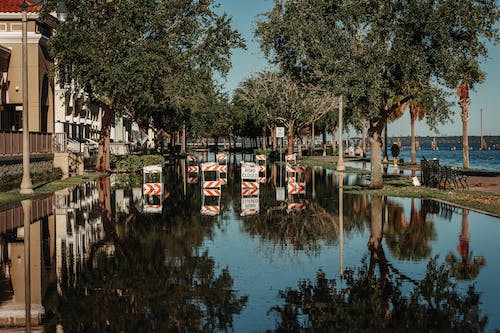
Picture this: you're driving down a road during a heavy rainstorm, and suddenly you find yourself in a situation where your car is submerged in high water. Panic sets in as you realize that your vehicle is stuck, and the water level continues to rise. What do you do? How can you ensure your safety and make it out of this potentially life-threatening situation?
Don’t Panic
First and foremost, it's crucial to remain calm. Panicking will only cloud your judgment and hinder your ability to think clearly. Take a deep breath and try to stay composed. Remember that there are steps you can take to increase your chances of survival.

Assess The Situation
The next step is to assess the situation. Determine the depth of the water surrounding your vehicle. If the water level is below the bottom of your car doors, it might be possible to drive out slowly without causing any damage or endangering yourself further. However, if the water reaches above the bottom of your doors or higher, attempting to drive through it could lead to disastrous consequences such as engine failure or being swept away by strong currents.
In such cases, it's best not to start the engine at all. Starting the engine could cause water to enter critical components like the intake manifold or exhaust system, leading to irreversible damage. Instead, focus on getting yourself out safely.
Call 911
If possible, call for help immediately using a mobile phone or any other means available. Inform emergency services about your location and predicament so they can dispatch assistance promptly.
In Certain Instances
While waiting for help to arrive, consider opening all windows slightly or breaking them if necessary. This will allow air circulation inside the car while also providing an escape route if needed. It's important not to attempt leaving through one of these windows unless absolutely necessary since exiting into fast-moving water can be extremely dangerous. Instead, wait for rescue personnel who are equipped with proper gear and training. If there are no other options and you must exit the vehicle, do so with extreme caution. If the water is shallow enough to stand in, carefully open the door and step out onto higher ground. However, if the water is too deep to stand in or there are strong currents present, it's best to climb onto the roof of your car.
Once on the roof, signal for help by waving your arms or any bright-colored clothing you may have. Stay put until rescue personnel arrive. Remember that they are trained to handle these situations and will know how to safely extract you from harm's way.
Prevention Is the Best Plan
It's worth noting that prevention is always better than finding yourself in a dangerous situation. Before driving during heavy rainstorms or flooding conditions, it's essential to check weather reports and road conditions. If possible, avoid areas prone to flooding altogether.
Additionally, maintaining your vehicle properly can also help prevent such incidents. Regularly inspecting tires for wear and ensuring they have sufficient tread depth can improve traction on wet roads. Moreover, keeping up with routine maintenance like checking brakes and replacing worn-out windshield wipers can enhance overall safety while driving in adverse weather conditions.
In conclusion, getting stuck in high water while driving can be a terrifying experience. However, remaining calm and following these steps can greatly increase your chances of survival. Remember: assess the situation, call for help immediately if needed, open windows slightly or break them if necessary for air circulation while waiting for assistance, and only exit the vehicle as a last resort under safe conditions or when rescue personnel arrive on scene. By being prepared and taking appropriate action during such emergencies, we can ensure our safety on the road even amidst challenging circumstances like high water situations caused by heavy rainstorms or flooding events.